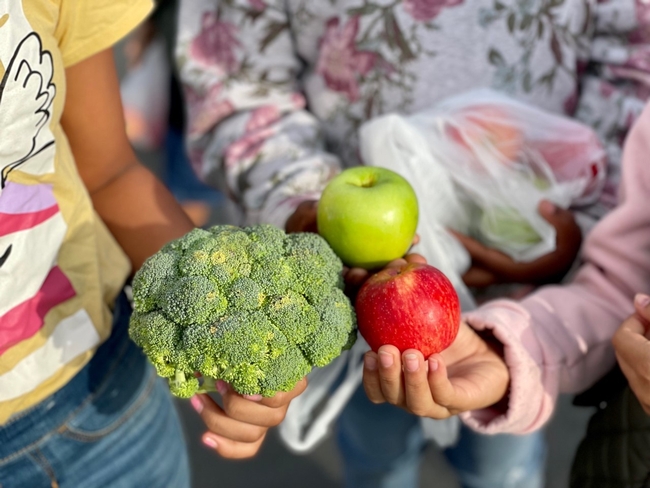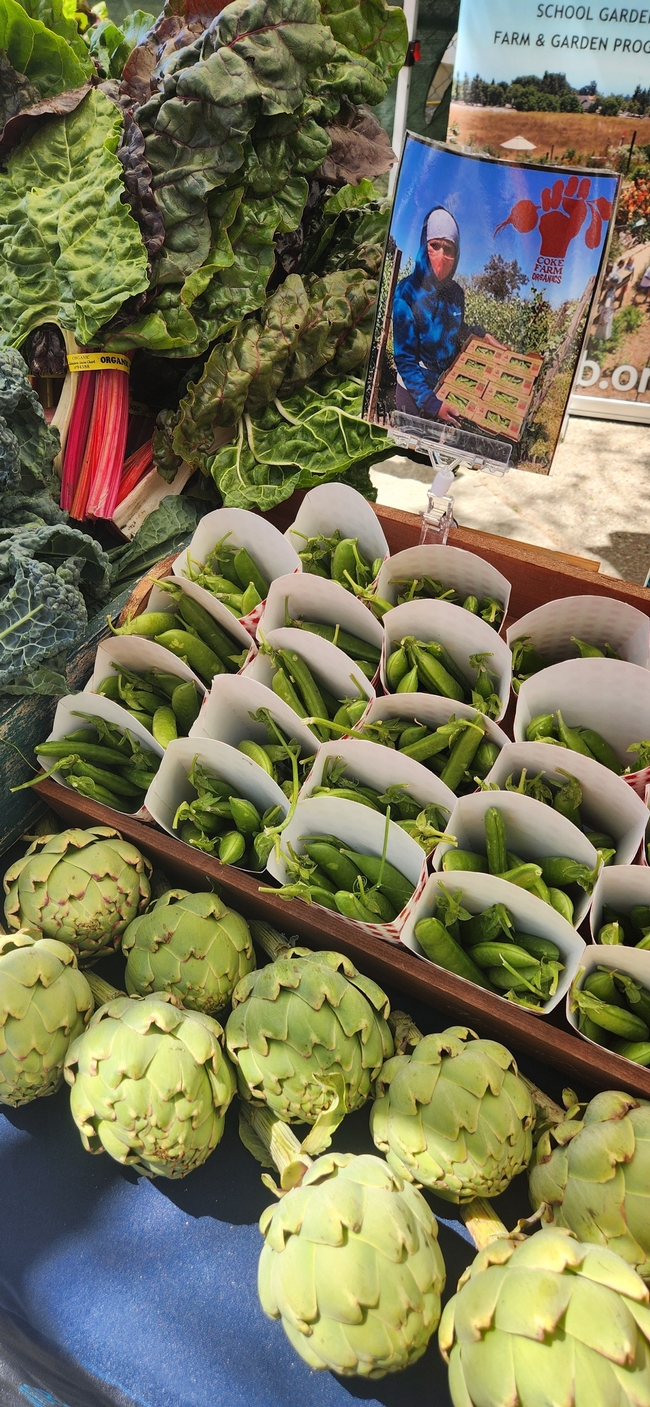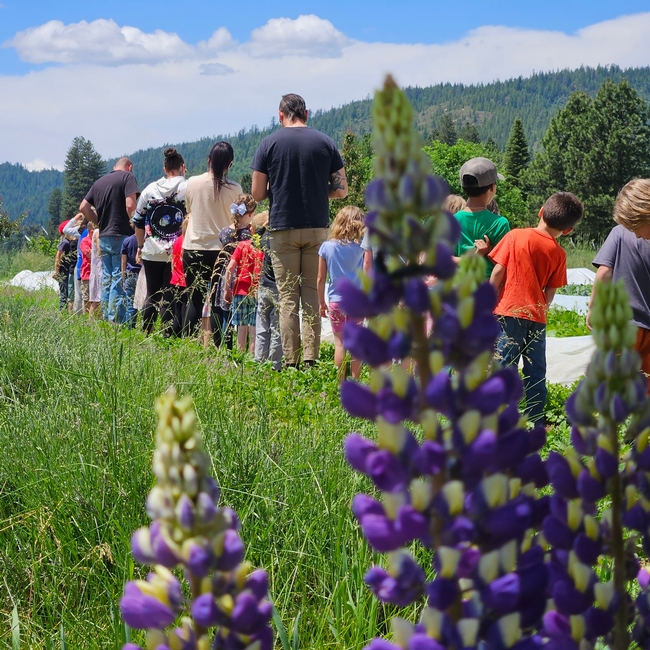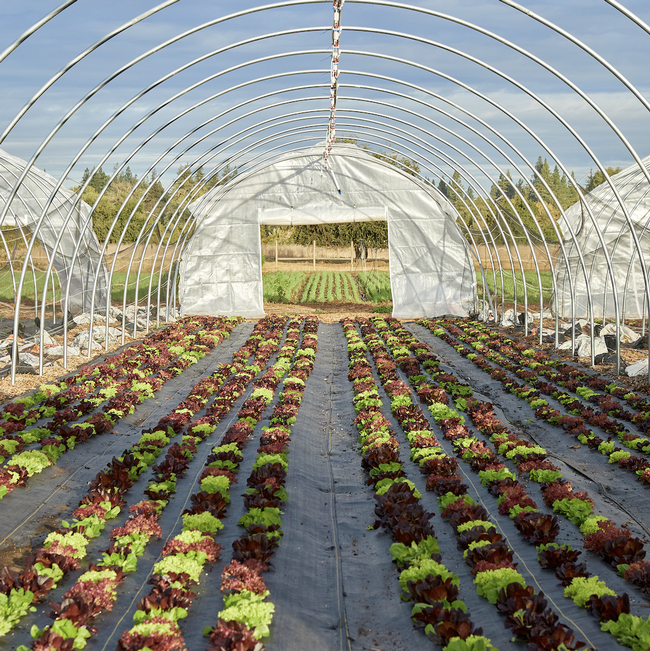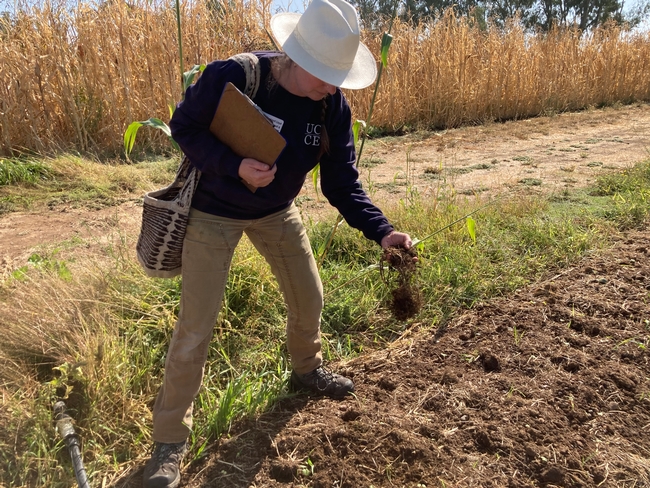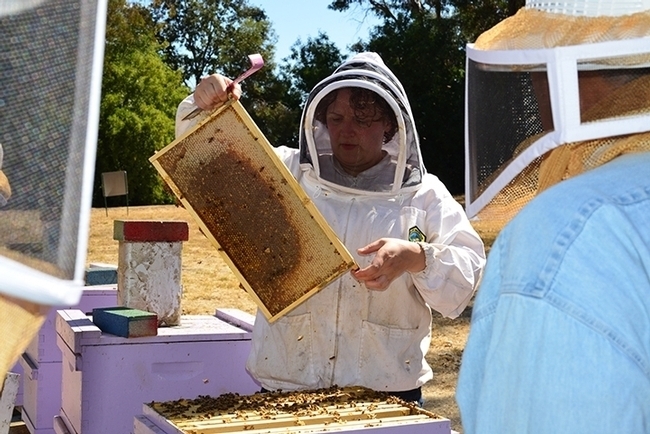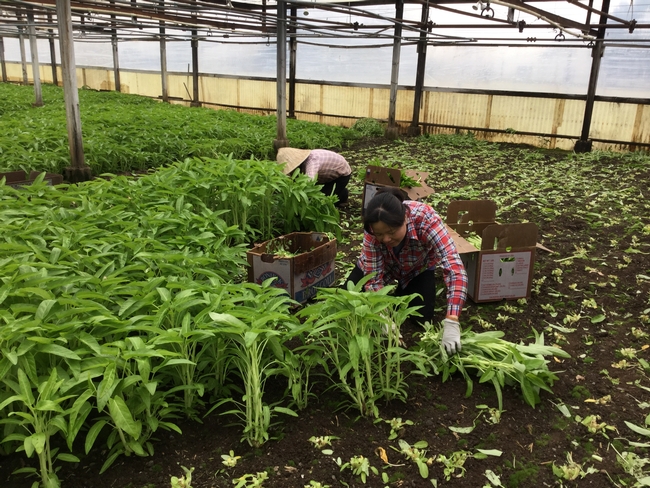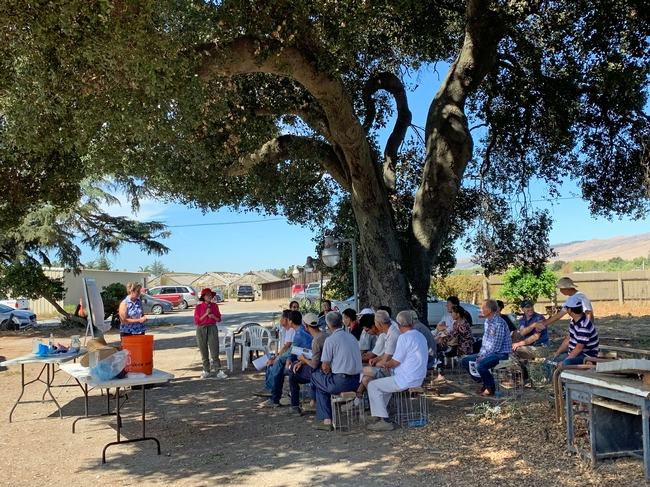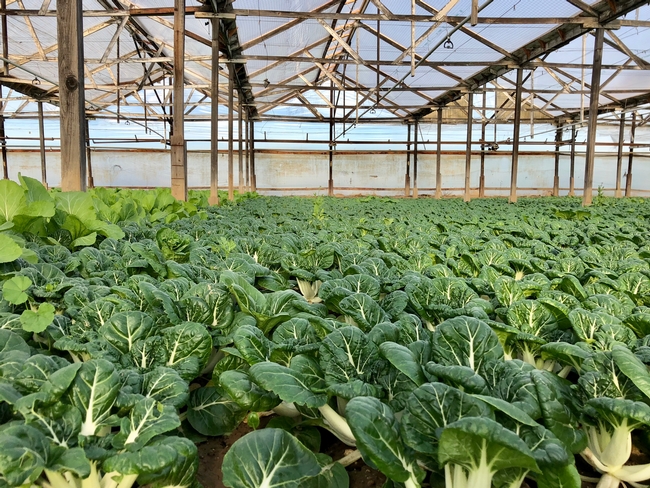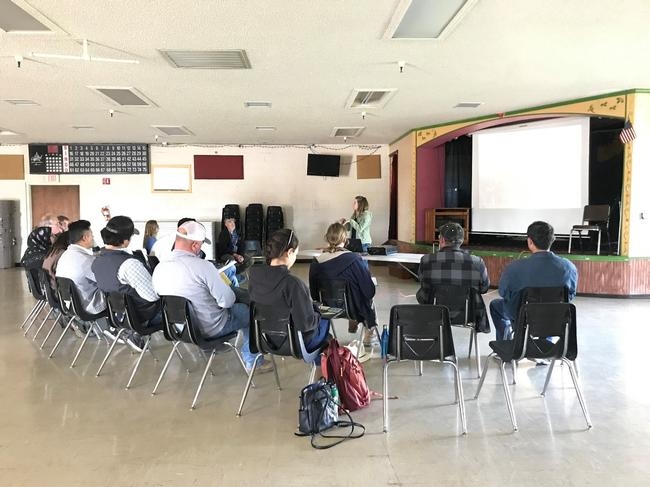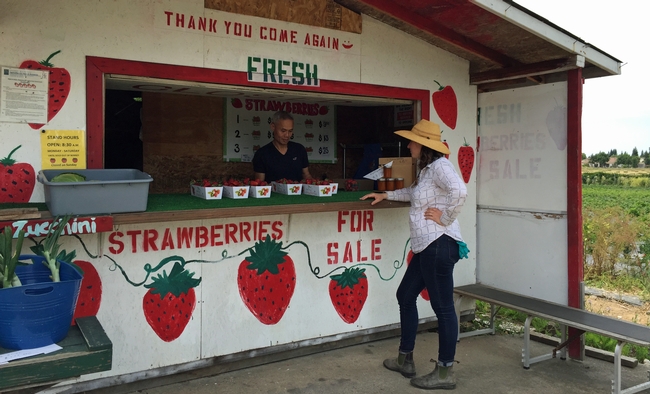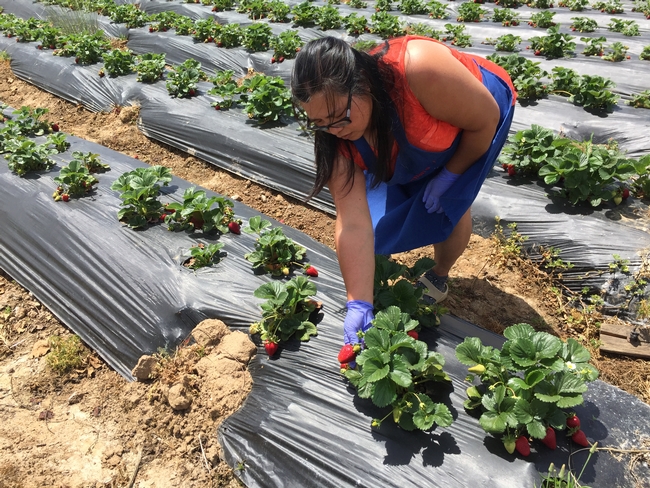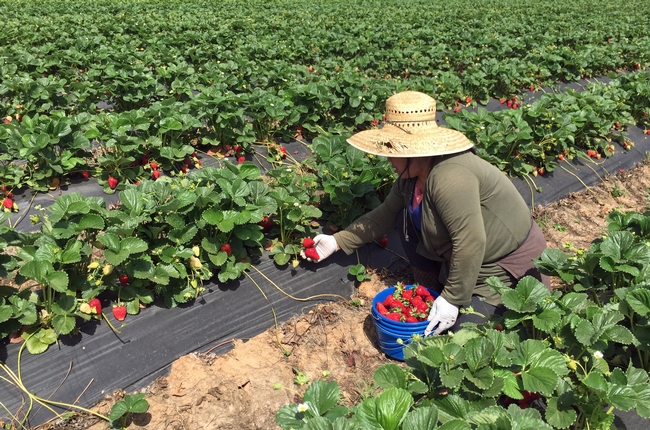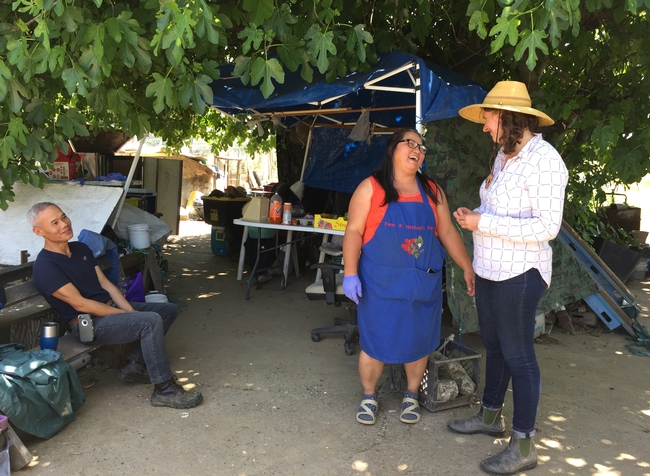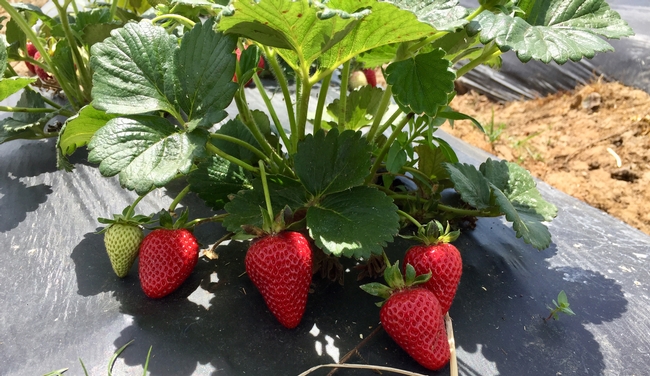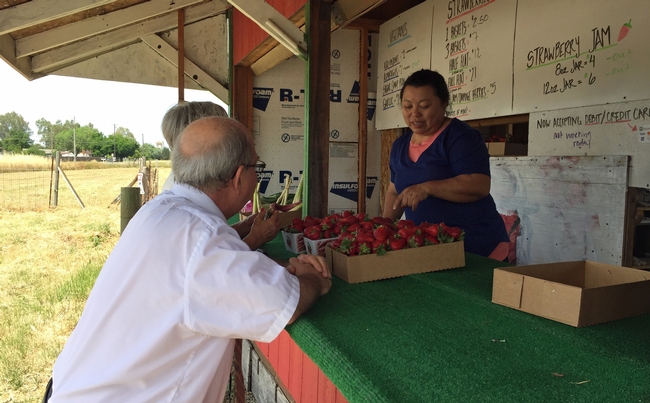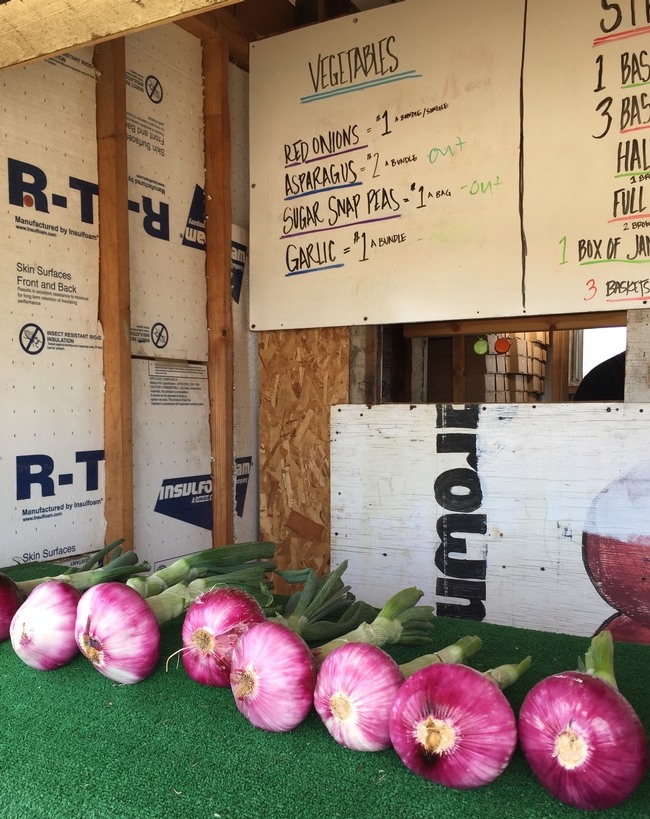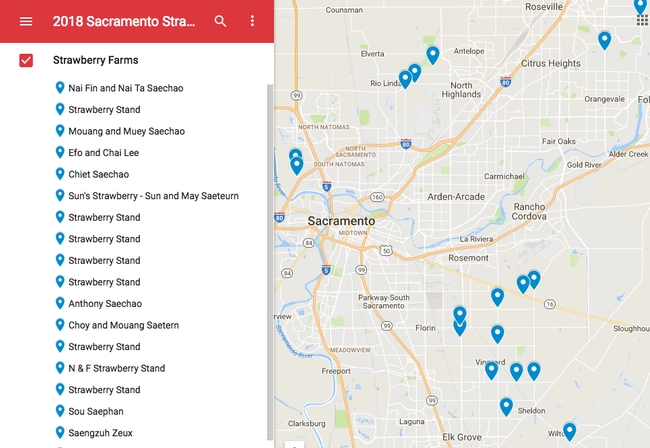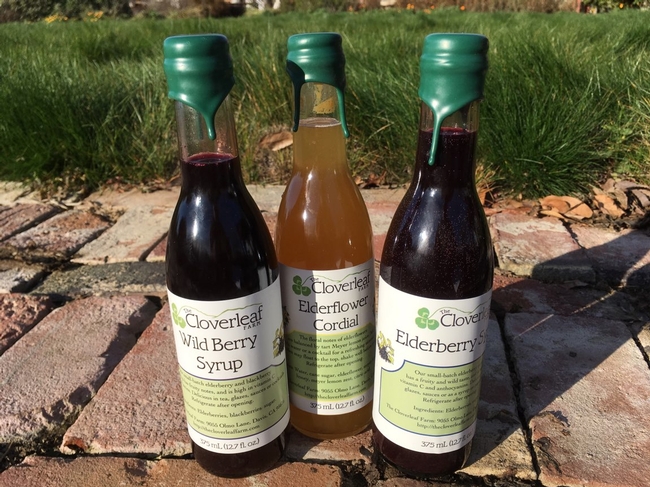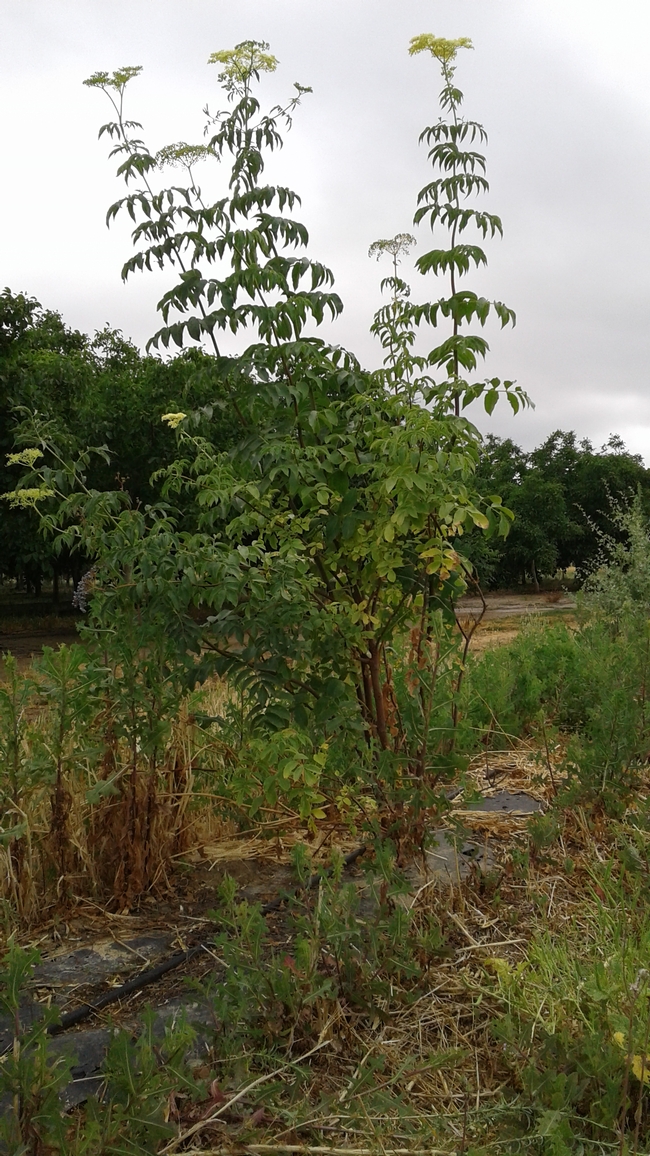Posts Tagged: Small Farms
Investments in farm-to-school program stabilize farms, expand climate-friendly farming practices
Small and midsize farms, women and BIPOC farmers especially benefit
A new report reveals that California farmers participating in the state's Farm to School Incubator Grant Program are increasing sales of fresh, local and organic produce, meat and dairy products to schools, according to researchers evaluating program impacts. The report found that 57% of the program's farmers made sales to schools between April and September 2023, representing an average of 33% of their total farm revenues. All food producers funded by the Farm to School Grant Program state that they use or plan to use climate-smart agricultural practices in their operations during the grant period.
While existing research shows that kids who engage with farm-to-school programs eat more fruits and vegetables, are more willing to try healthy foods, and even perform better in class, the California farm-to-school evaluation project examines a gap that most farm-to-school research hasn't addressed: how local purchases from schools affect the agricultural sector and the environment.
The report found that the investments are flowing primarily to the farmers the state seeks to support through this program: Of the 50 producer grantees evaluated in this report, 42% are owned by people who identify as Black, Indigenous and People of Color, and 62% are owned by women. Nearly all (94%) are small to midsize operations.
Three producer grantees revealed that the Farm to School Incubator Grant Program funding likely prevented them from going out of business. “This grant … has and will enable us to do things on the farm that would probably take us a decade to do but we'll be able to do that in one or two seasons. So [it] really moves us forward a lot,” noted one farmer.
Beth Katz, a lead researcher and executive director of Food Insight Group, said, “Farmers are expanding their relationships with local school districts, increasing their sales to schools, investing in infrastructure and staff, and forming new relationships with food hubs that can help them with the often complex purchasing requirements unique to school food. While we're still at a very early stage of understanding the impacts of these investments, we're beginning to see patterns emerge.”
A Humboldt County farmer noted that food hubs, which are also supported by the grant program, are critical to their success in accessing the school food market: “[The food hub] is really a huge game changer to be able to make that one drop in town, even though it's an hour away, rather than going to [several school sites] and just making all these little drops. That's been one of the ways that it's very . . .appealing to us as a farm to participate.”
The report also examines the potential for environmental impacts through direct investments in farmers who use climate-friendly farming practices.
“I'm inspired by the potential for the farm-to-school program to support farmers using environmentally beneficial practices like reducing pesticides, planting cover crops and growing organic — and to help farmers expand or adopt these practices. It's essential these farmers have a market for what they grow to see durable environmental benefits,” said Tim Bowles, who is leading the environmental impacts assessment for the evaluation team and is an assistant professor in the Department of Environmental Science, Policy & Management at UC Berkeley and lead faculty director of the Berkeley Food Institute.
“We're also seeing farms actually expand their acreage in order to sell to schools, suggesting this is a desirable market. We're investigating the environmental impacts from these investments, especially for climate,” Bowles said.
As with many new programs aimed at building out long-delayed infrastructure, school food systems improvement demands a deep-rooted approach.
“The challenges around changing a complex school food system are substantial,” Gail Feenstra, a pioneer in farm-to-school research and co-lead on the project from UC ANR stated. “Decades of research shows the value to children from fresh, locally sourced food. However, what is becoming more clear from this research is that long-term investments in the full farm to school system are crucial. Without regional-level infrastructure, staffing, aggregation and distribution in place to support getting that locally grown food from farms to the schools and kids, we'll have challenges moving the needle.
"Fortunately, the state's strategic and innovative investments in the entire farm to school supply chain – meaning funding for school districts, farmers and also their regional partners, combined with support from CDFA's regional staff – are beginning to address those long-standing challenges.”
UC offers resources for urban farmers at EcoFarm
University of California scientists will be participating in the 44th Annual EcoFarm Conference Jan. 17-20 in Pacific Grove. EcoFarm participants gather to celebrate and learn about advances in farming and food systems throughout the state. This year, the three-day conference will highlight Black, Indigenous and People of Color communities that depend on agriculture, while also showcasing the new technological advances that further the development of agriculture.
Researchers from the UC Davis Veterinary Teaching Hospital's Department of Population Health, the Western Institute of Food Safety and Security and UC Agriculture and Natural Resources will be attending the conference to highlight the importance of food safety and technical skills in urban farming.
At EcoFarm, the Western Institute of Food Safety and Security will showcase its Civic Urban Farmer Program with an exhibit. The program, led by UC Davis assistant project scientist Sara Garcia and supported by UC Cooperative Extension, strives to uplift BIPOC communities.
The Civic Urban Farmer Program
The Civic Urban Farmer Program – a no-cost, 11-week program for farmers in the Sacramento region and Bay Area – provides technical support for new and upcoming urban farmers through webinars and in-person events. The program is available for any race, gender, age and skill ability, and seeks to provide safe, expert advice for farmers at any scale.
Soil health, composting, pest management, business marketing, food safety and urban policy are among the topics covered in its lecture-style classes.
Earlier this year, the program graduated its second cohort, with the support of two nonprofit organizations, Three Sisters Gardens in West Sacramento and Common Vision in Oakland. The program is supported by industry professionals, researchers and government officials, as well as local nonprofit and non-governmental organizations.
Elina Niño, UC Cooperative Extension specialist in apiculture, joined the Civic Urban Farmer Program to support urban farmers with training on managing pollinators to increase crop yields and create value-added products such as honey. The success of the pollinator program revealed that small urban farmers desire resources and education that are tailored specifically toward the cultivation of healthy and safe food.
For more information about the Civic Urban Farmer Program, visit https://www.wifss.ucdavis.edu/urbanfarmers.
Organic Agriculture Institute
The UC Organic Agriculture Institute, led by UC Cooperative Extension specialist Houston Wilson, will have an exhibit at EcoFarm. UC Organic Agriculture Institute brings together growers, certifiers, consultants, community groups and other stakeholders with UC research and extension personnel to share information about organic farming.
For more information about the UC Organic Agriculture Institute, visit https://organic.ucanr.edu.
Workshop speakers
Several UC Cooperative Extension advisors will be speaking at EcoFarm, including Richard Smith, UCCE emeritus vegetable crops advisor; Patricia Lazicki, UCCE vegetable crops advisor; and Margaret Lloyd, UCCE small farms advisor.
Connect with @ucanr on X, Instagram and LinkedIn.
UCCE small farms advisor strives to make farming more inclusive and equitable
This is one of a series of stories featuring a sampling of UC ANR academics whose work exemplifies the public value UC ANR brings to California.
The coronavirus pandemic has disrupted life for everyone, with information about COVID-19 changing daily. For Californians who aren't fluent in English, obtaining reliable information is particularly difficult. Aparna Gazula, a University of California Cooperative Extension advisor who serves Santa Clara, San Benito and Santa Cruz counties, has been providing COVID-19-related information in Chinese and Spanish for immigrant Bay Area farmers.
In March, when restaurants shut down to curb the spread of the virus, many restaurants and wholesale produce markets cancelled produce orders placed with farmers. Language, cultural differences, low computer literacy and limited access to computers created barriers for small-scale, immigrant farmers in the Bay Area to quickly find new buyers for their perishable produce. Gazula introduced them to food banks, hoping they would accept the produce donations, but the food banks were not set up to pick up donations from small farmers.
Most small-scale farmers lack the financial capital to absorb the revenue shock. To help offset losses from unsold specialty crops, the UCCE advisor and Qi Zhou, the small farm program assistant specialist, have been helping Asian and Latino farmers complete English-language disaster aid applications.
“Since March, we have helped farmers apply for Covid-19-related farmer relief funds,” Gazula said. So far, she said, four of the 17 immigrant farmers who applied to the American Farmland Trust Farmer Relief Fund have received a total of $4,000, and 10 farmers of the 30 who applied to the California Family Farmer Emergency Fund received a total of $42,500.
Recently the U.S. Department of Agriculture expanded the list of specialty crops eligible for its Coronavirus Food Assistance Program to include bok choy, daikon and other vegetables with a deadline of Sept. 11. Communicating by phone and the app We Chat, Gazula and Zhou, who speaks Mandarin, notified local farmers, and advised them how to apply for the disaster funds. Zhou, USDA Natural Resources Conservation Service rangeland management specialist Ling He and another NRCS staff member assisted 64 farmers in completing applications over the past week.
Bob Kuang, president of the Bay Area Chinese Growers Association, shares UCCE information with the association's growers.
“Most of my members don't understand English so they [UC Cooperative Extension] help, like for policy and safety,” Kuang said, "providing information the growers can't find elsewhere in Chinese.”
When she was a girl, Gazula saw how hard farmers work to make a living off the land while spending summers and winter breaks at her grandparents' farm in India, where they grew rice, mung beans and chili peppers.
“Farmers are very hardworking people, and small farmers even more so as they manage everything on the farm,” said the small farms and specialty crops advisor. “Their grit, determination to succeed and hardworking spirit truly inspire me.”
“I'd like to help them be successful as much as I can,” she said, “be it research-based information to farm successfully or bilingual support to help them better navigate regulations or apply for grant funds.”
In addition to helping farmers apply for financial relief, Gazula alerted the farmers to shelter in place rules and is delivering COVID-19 safety information about masks, sanitation and social distancing requirements in Chinese and Spanish to them.
“We also helped farmers implement COVID-19-related protocols on their farms,” she said. “We are currently putting together 200 COVID-19 kits that will help farmers comply with worker health and safety-related protocols on their farms. The COVID-19 kits contain reusable masks, hand sanitizer, bilingual Cal OSHA guidelines for employers regarding COVID-19, and a resources sheet listing where to buy the enclosed items.”
When she's not involved in COVID-19 crisis communications, Gazula continues to conduct research on nitrogen uptake in bok choy and bell peppers and irrigation management. She collaborates with Linda Chu, Guo Ping Yuan, Han Qiang Kuang and other Santa Clara County growers who allow the farm advisor to study crops on their farms.
“They do research, like test irrigation systems for right amount of water for the crop and nutrition – fertilizer – for the crop. They do lot of things,” said Kuang, of the Bay Area Chinese Growers Association, who provides land at his farm in Gilroy for UCCE studies.
Gazula also advises farmers on how to implement the Food Safety Modernization Act (FSMA) on their farms and fulfill irrigated land nitrogen reporting. Fines for not complying with regulations can threaten the economic sustainability of small family farms.
Although the majority of growers she works with regularly have limited English and need assistance filing reports to the government, others consult her for production information they can't get elsewhere for the specialty crops they grow. Farmers of Korean, Japanese, Indian and Vietnamese ancestry and others attend meetings to learn the latest research on Asian vegetables such as daikon radish, napa cabbage, bok choy, on choy and various Asian leafy mustard crops including gai choy and pea shoots.
Gazula, who joined UC Cooperative Extension in 2016, currently works with about 180 small-scale growers in San Benito and Santa Clara counties and hopes to expand her outreach to farmers in Santa Cruz County.
To help small farmers adapt to climate change, Gazula and Zhou partnered with UC Agriculture and Natural Resources' Healthy Soils Program staff and Santa Clara County Farm Bureau for technical assistance and held workshops during the winter. Zhou helped the farmers apply for grants from the California Department of Food and Agriculture's State Water Efficiency & Enhancement Program and Healthy Soils Program. The 22 farmers who received CDFA grants brought a total of $424,111 into Santa Clara County.
The outreach work UC Cooperative Extension does wouldn't be possible without the help of bilingual staff such as Zhou, the scientist Gazula hired with grant funds in September, and some translation support from partner organizations and growers as well.
“Relying on partners for translation support isn't practical,” Gazula explained. “Outreach is most effective when it is targeted. It's not just literally translating words, but translating the information the words convey. Because we provide outreach materials to comply with regulations, the language in these materials is very technical and it's important that the information is presented accurately. We also depend on relationships with the farmers to extend the information within their communities. Long-term, it's easier to do outreach with support from our own staff.”
Competition is stiff for money to serve non-English-speaking Californians because the state is home to so many immigrants with different needs. The majority of the grants she uses for outreach are for food safety. The local Open Space Authority, which promotes preserving land for open spaces, has also provided funds for small and beginning farmer outreach and education.
Gazula draws on the expertise of fellow UC Cooperative Extension farm advisors across the state. For example, she said, Richard Smith, who specializes in vegetable production, and Michael Cahn, who specializes in irrigation and water resources, are always willing to help, even though they are not assigned to serve Santa Clara County.
“Farmers already have tremendous challenges when it comes to being successful,” Gazula said. “I feel language barriers and lack of access to the same resources as fluent English-speaking growers shouldn't be the reason they can't farm successfully.”
Strawberry stands sell berries fresh from the field
Slugs, snails, ants, aphids, spider mites and inclement weather conspire against strawberry growers harvesting perfect red berries to sell.
“Farming is hard work,” said Fam Lee, as she pulled a weed from a row of strawberry plants. Lee and her husband Nathan Punh are among about 60 Mien farmers in the Sacramento area who call on Margaret Lloyd, a UC Cooperative Extension advisor, for farming advice.
“Although we are not organic farmers, we always want to go with organic,” said Lee. “For example, we have slugs and ants, I asked Margaret if it's okay to put organic slug bait around the plant as long as it doesn't touch the berry. She said that's the best way to do. We work closely with our extension staff.”
In the Sacramento area, many of the Mien-owned farms are husband and wife teams. The typical couple farms an acre or two themselves, picking berries to sell the same day at a roadside stand, which provides the family's primary source of income.
“Many of them grew up on farms in Thailand or Laos growing vegetables or growing rice or soybeans,” said Lloyd, who serves small-scale farmers in Sacramento, Solano and Yolo counties. “A lot of them come from farming backgrounds so when they came to this country, they also sought out an agrarian lifestyle.”
Some Mien growers had never seen a strawberry before arriving in California, but chose the high-value crop to maximize returns on their small plots of land.
To help Mien growers develop successful strawberry farms, Lloyd updates them on regulations and shares growing tips at an annual extension meeting, visits them at their farms, and records videos demonstrating how to do things such as using compost to fertilize the crop.
“Because of language barriers, coming out to the farm regularly is a big part of the job,” said Lloyd, who partners with staff from the National Center for Appropriate Technology (NCAT) to assist Mien farmers.
“Once we're on the farm, we can communicate in-person more easily,” she said. “Often times it involves pest identification, so I'll show them how to use a hand lens and how to identify spider mites, aphids and lygus bugs, for example.”
“A lot of them have children who speak English fluently so if they don't speak English fluently, sometimes the children come out and help.”
For the past five years, Lee and Punh have been growing and selling strawberries at a farm stand on Bond Road, between Bader and Bradshaw, in Sacramento. They grow Albion, Chandler, Santa Rosa and Seascape – sweet, delicate varieties, some of which aren't found in supermarkets because the berries don't store and ship as well. They typically begin harvesting berries at the end of March and pick through July or August, depending on the weather. This year, the first berries were ruined by spring rain and frost.
Savvy consumers will ask for certain varieties by name, Lloyd said. “Chandler is well-loved by consumers for its delicate flesh and sweet flavor. Albion produces larger berries that are also very tasty.”
Because berries sold at the roadside stands are picked fresh daily, the farmers wait until berries are perfectly ripe before picking them.
Monday through Saturday, Lee begins harvesting her strawberries by hand at the break of dawn.
“We start at 5:45, the minute we can see, and we pick until 8 o'clock. That's our goal,” Lee said. “By 8:30, we want to open our stand and we sell until all the berries run out.”
Lee's parents often drive up from Alameda to help pick berries.
To extend the farm stand season, some Mien farmers supplement the strawberries with other berries, strawberry jam and vegetables. They grow blueberries and blackberries, tomatoes, peppers and green beans and sometimes specialty vegetables such as bittermelon.
“Growing strawberries isn't easy, but it's enjoyable work,” Lee said.
Lloyd has updated a map showing locations of about 60 strawberry stands in the Sacramento area at http://bit.ly/strawberrystands.
New project seeks to build on the benefits of elderberries
Can plants typically grown for hedgerows also be a source of income? That's the question guiding a new UC study on the potential for farmers to grow elderberries as a commercial crop.
Blue elderberry, a California native plant with clusters of small bluish-black berries and a sweet-tart flavor, have long been eaten by Native Americans in the western states and are used today in jam, syrups, wines and liqueurs. And while elderberry orchards are popping up in parts of the Midwest, California's elderberries are usually just grown on field edges, and elderberry products sold retail rely mostly on foraged crops or imports.
Farmers at The Cloverleaf Farm near Davis are already selling elderberry products from plants grown on their farm, alongside their blackberries and stone fruits. And they find that customers love them. The farmers want to understand the viability of growing elderberries for market beyond their nascent effort, bringing some of the out-of-state production home.
The UC Sustainable Agriculture Research and Education Program (SAREP) launched a project in collaboration with the Cloverleaf Farm, the UC Agriculture Issues Center, UC Davis Department of Food Science and Technology, and four Central Valley farmers to assess the farm management practices, nutritional content, and market potential for elderberry and elderberry products in California.
“I think a lot about the long-term systems sustainability of our food system,” said Katie Fyhrie, one of the farmers at the Cloverleaf. “I keep thinking about how much we focus on production of blackberries and blueberries, when the elderberry also achieves that dark berry color and flavor people like with much fewer resources.”
Elderberries are typically grown on farms as hedgerows for their ability to attract beneficial insects, act as a windbreak, and sequester carbon, benefiting the overall health of the farm, but not providing direct benefit to a farmer's bottom line. Despite long-running federal cost-share programs for planting hedgerows, the number planted in California is still quite small relative to the large expanses of farmland in the state. Adding a financial incentive to planting elderberries may help increase the popularity of hedgerows amongst farmers.
“When we think about building sustainable farming practices, we can think about the whole farm as being a site of both conservation and profitability,” said Sonja Brodt, the project's principal researcher at UC SAREP. “Elderberries may have the potential to combine crop production with environmental conservation functions in a way not typically seen on California farms. This model would enable small- and medium-scale farmers to receive a direct income from a farm practice that benefits the ecosystem as well.”
As climate change impacts California with heat and unpredictable water availability, some studies suggest farmers may need to consider diversifying the crops they grow to adapt to changing local climates.
Elderberries, which grow in arid California regions along the coast and into the mountains, have the potential to grow in a range of climates and adapt to changing California ecosystems in the future.
It is unlikely that farmers would plant entire orchards of elderberries, in part because of restrictions on pruning elderberries that may be home to the Valley elderberry longhorn beetle, a federally threatened species. But for small- and medium-scale growers looking to diversify their income sources, elderberries may provide a boost.
The two-year elderberry project now underway will conclude with a growers' production guide, cost of production study, an assessment of market demand and nutritional contents, and workshops to help link growers with buyers interested in elderberry products. The project will also address issues related to the Valley elderberry longhorn beetle and generating income from hedgerows.
“Elderberry juice is already in so many products,” Fyrhie said, “so building a market for locally grown elderberries seems like a no-lose situation.”
For farmers interested in learning more about incorporating perennials into annual crop farms and similar agroforestry practices, view a webinar on the topic recently hosted by UC SAREP here.

